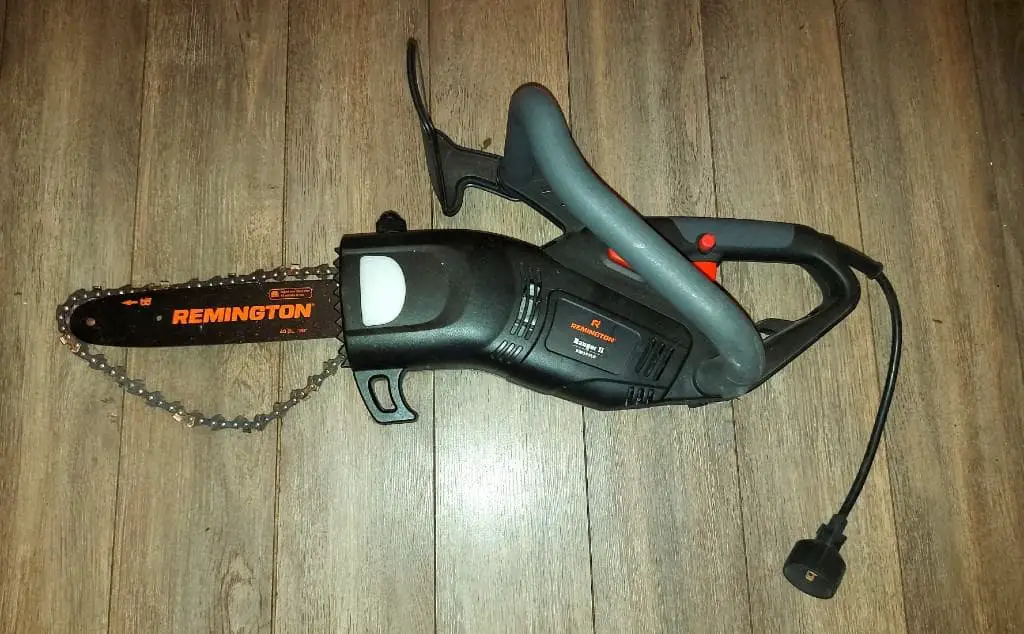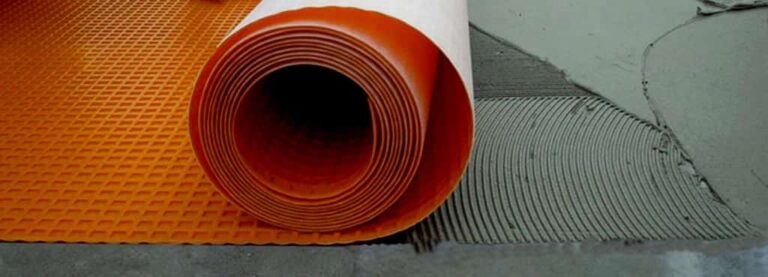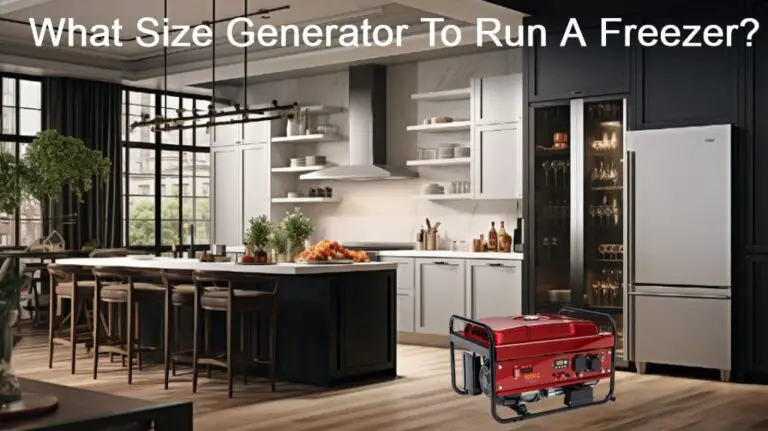Do Chainsaw Chains Break and Snap?

Having your chainsaw chain break or snap, or come loose is not just inconvenient. It is also incredibly dangerous. But what causes a chainsaw chain to come apart so abruptly?
Chainsaw chains can break and snap due to improper use and maintenance, using a poor-quality chain, and incorrectly assembled chain parts. The breakage usually happens very suddenly and can cause the chain to hit you or other people nearby at high speeds.
To prevent your chainsaw chain from breaking at the worst possible moment, keep reading. It is crucial to be well-informed and responsible when it comes to handling a tool like a chainsaw.
Do Chainsaw Chains Come Apart?
Chainsaw chains can come apart, break, or snap, especially if you aren’t well-informed about correct chainsaw use and maintenance. Chain breakage can happen due to a number of reasons, most of which come down to a lack of experience and caution when it comes to properly maintaining such a tool.
The unexpected breakage typically occurs while the chainsaw is in use, and it is extremely dangerous and highly likely the chain will break and fly off the chainsaw. If the chain hits you, your belongings, or anyone nearby, it can cause severe damage and potentially even fatal injuries, especially if it ricochets off of the impact site.
Always care for your chainsaw properly, follow safety precautions, and never use your chainsaw in a way that goes against what it is designed for.
Thankfully, we’re about to cover in-depth the many potential reasons why a chainsaw chain could suddenly come apart, become damaged, snap, or come loose so you can avoid such a breakage from occurring.
What Causes a Chainsaw Chain To Break?
Improper use, lack of maintenance, low-quality parts and improper chain tension are the main reasons chainsaw chains deteriorate and eventually break entirely. All these issues are easily preventable if you use and maintain your chainsaw with proper care.
Let’s get into the most common reasons why your chain could snap, fall off, or otherwise become damaged and unusable.
Improper Use
One of the most common causes of chain breakage is a lack of knowledge, training, and experience. Novices are far more likely to misuse chainsaws, often resulting in injury or damaged property.
Improper use includes:
- Using the chainsaw to saw through anything it is not meant to handle.
- Allowing the chain to touch the ground as you start it.
- Attempting to use the tool while the safety brake is engaged.
Plus, sudden kickback can occur when misusing a chainsaw, which will instantly damage and potentially snap your chain.
Damaging your chain irresponsibly will compromise its strength and durability, making it more likely to snap as you’re using it.
Read your owner’s manual carefully and only use it as directed to prevent damaging your chain, and always use it at least 15 to 20 feet (4.57 to 6.09 m) away from other people. You should also be sure to clear your surrounding area of any objects or debris that could come in contact with the chain as you’re using it.
Improper Maintenance
Your chainsaw needs to be maintained with care throughout its lifetime if you want it to last. Maintenance measures you should be taking include:
- Sharpening the blade regularly.
- Checking the chain oil and chain brake with each use.
- Checking that the guide bar is always attached in the correct position.
Every time you use your chainsaw, you should check it carefully for damage. Also, keep an eye out for rust that can erode the chain and make it more likely to break.
It’s a good idea to have a few extra chains as backups if yours needs to be replaced. If your chainsaw is making rattling noises, not cutting evenly, or feels unstable while you’re using it, it may be time to switch out the chain for a new one.
While you should sharpen your chainsaw’s cutting teeth regularly to keep it from becoming dull, over time, the depth gauge will wear down to the point where it won’t be possible to sharpen it any further, and it will need to be replaced.
Using Cheap, Low-Quality Chains or Other Components
Using a low-quality chain is one of the most common causes of chain breakage. Never use a poor-quality chain in an attempt to save money, as you will end up replacing it with a more expensive chain anyway.
In severe cases, you might even end up injured or having to replace whatever the chain has damaged when it breaks. You will often end up paying far more for a low-quality chain than if you had just purchased a high-quality one in the first place.
Improper Chain Tension
Your chain could also break if it is too loose or too tight. Thankfully, determining chain tension is quite simple, and adjusting your chain’s tightness is also fairly easy.
To assess the tension of your chain:
- Turn the chainsaw off and let it cool.
- Gently tug on the chain, pulling it away from the bar. It shouldn’t be sagging, and it should give a bit of resistance as you pull on it.
- Finally, release the chain. A chain with the correct amount of tension should quickly snap back into place.
If the chain feels too tight to pull on or sags away from the bar, it is probably time for you to loosen or tighten it. It’s a good idea to get in the habit of checking your chain tension each time you use it.
A chain that is too loose can result in uneven or difficult cuts. In extreme instances, the chain could snap. On the other hand, if your chain is too tight, the intense pressure can cause it to break and fly off the bar at speeds up to 60 feet (18.28 m) per second. You always want to be sure your chain is adjusted correctly to avoid breakage and injury.
Loose Rivets
Even a single damaged or broken rivet on a chain can cause severe damage. Therefore, as part of your regular maintenance, you should always carefully check each rivet on the chain for any unusual wear or breakage.
You should always replace any chain that has damaged or loose rivets.
Inadequate Lubrication
Your chainsaw needs adequate lubrication to run effectively. Chainsaw oil helps to prevent the chain from accumulating dust and allows the chain to cut effectively. Check your chainsaw’s lubrication chamber regularly to ensure it isn’t blocked or otherwise not lubricating the chain correctly.
Never use motor oil to lubricate your chain; it is best to use oil specifically designed for lubricating bars and chains.
Can You Fix a Broken Chainsaw Chain?
You can fix a broken chainsaw chain, but it is time consuming and costly, and you still run the risk of the chain breaking again afterward. It is best to replace your chainsaw chain if it is broken, especially if it has multiple broken teeth or won’t fit back into the rails after it has come off.
Preventative maintenance and proper use is the best way to keep your chainsaw from breaking in the first place. Once it has already broken or sustained significant damage, your most reliable option is to replace it altogether.
Conclusion
There are many ways a chainsaw chain can break, snap, or fall off, and virtually all of them are due to a lack of training, research, and care while using and maintaining the tool. However, if you take good care of your chainsaw, use a high-quality chain, and address any issues as soon as they arise, you will be able to avoid chain breakage.
Incorrectly using or maintaining a power tool like a chainsaw can result in costly damages and serious injuries when the chain inevitably snaps. Always wear PPE and use your chainsaw responsibly.




